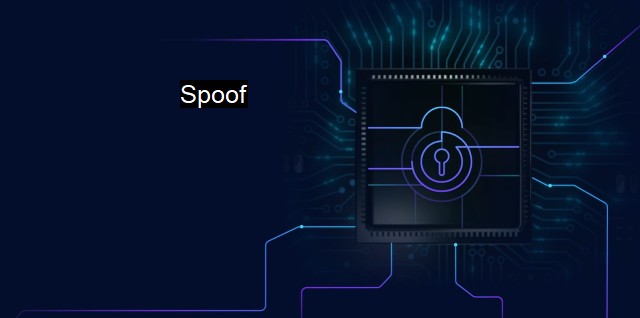What is Spoof?
The Deceptive World of Spoofing: Uncovering the Latest Cybersecurity Threats and Attacks
In the realm of cybersecurity and antivirus technologies, the term 'spoofing' refers to a complex, deeply intricate method hackers use to gain unauthorized access to private data, personal information, furtive codes, or any other confidential material. spoofing is any practice where a person or program masquerades as another by falsifying data, thereby gaining illegitimate advantage or influence. In simpler terms, spoofing is digital impersonation, a case of taking on a false identity inline with criminal schemes and comprehensive security breaches.Spoofing attacks are primarily carried out in four forms: IP spoofing, Email spoofing, DNS spoofing, and Caller ID spoofing, each of which involves duping or tricking a system or person into divulging sensitive data by imitating someone trustworthy. these forms of spoofing, the unifying thread lies in the aim of the attackers. They are always looking to gain unauthorized access, redirect internet traffic, or spread malware in pursuit of their illicit gains.
IP Spoofing was first used in 1981, involving the fear technique to intrude into others' computer networks. The attacker modifies their source IP in the data packets, tricking the target into believing that the packets are from a trusted source. Once the system is tricked into trusting the origin, the attacker can disable the target's security checks, thereby slipping in their malware into the system.
Email spoofing, on the other hand, involves an attacker falsifying the header of an email so that the recipient thinks it's from a trusted source. They oftentimes cleverly use this form of spoofing to mask phishing attacks, tricking the recipients into divulging personal information like credit card numbers or social security details.
DNS or Domain Name Server spoofing involves exploiting the process whereby a domain name is converted into an IP address. The attacker corrupts the DNS cache with fake domain-to-IP correlations. When users request the falsified domain name, they are redirected to the wrong IP address, typically a malicious website.
Caller ID spoofing relates to voicemails and modern telephony. It's when an attacker fakes the caller identification to disguise their identity, aiming to gain the recipient's trust and defraud them.
Antivirus software becomes severely challenged in detecting spoofing attacks as the methods used in spoofing are designed to trick even the most modern firewalls. The attackers present themselves as coming from familiar addresses, either from within the network or from a trusted external network, thus successfully forging a breach. The sophistication of these methods proves problematic as antivirus software inherently tends to trust such connections.
Still, an excellent antivirus software can combat spoofing to a considerable extent. One way of doing so is by strengthening the initial check process. instead of simply checking the IP or the email address of a sender, having an antivirus software that runs rigorous compatibility checks and a series of keystroke analytics can go a long way towards tightening the net on spoofing. It is important to remember that while antivirus software can offer protection, vigilance from users also plays a vital role in mitigating and, at best, preventing such attacks.
The practice of spoofing features prominently in the modern digital infrastructure, making a pronounced mark on cybersecurity issues. It has become both an impetus and a symptom of the trade-off between absolute security and open interaction in the routine use of the digital scape. The continued evolution of spoofing techniques suggests we are yet to see the audience of their elaborate, dangerous performance.

Spoof FAQs
What is spoofing in terms of cybersecurity?
Spoofing refers to deception techniques used by hackers to trick a system into thinking that a message is coming from a legitimate source when it's actually not. The goal of a spoofing attack is to gain unauthorized access to sensitive information and networks.How does email spoofing work?
Email spoofing involves creating a fake email that looks like it's been sent from a trusted source. The email may contain a link or attachment that, when clicked or downloaded, can infect the user's computer with malware or lead to a phishing scam.Why should I be concerned about spoofing attacks?
Spoofing attacks are a serious threat to cybersecurity because they can lead to data breaches, identity theft, and financial loss. A successful spoofing attack can be difficult to detect and can cause significant damage.How can I protect myself against spoofing attacks?
To protect yourself against spoofing attacks, it's essential to use strong passwords, keep your antivirus software up to date, and be cautious about suspicious emails and attachments. You can also use two-factor authentication, which can help prevent unauthorized access to your accounts.Related Topics
Phishing attacks Malware detection Man-in-the-middle attacks Email spoofing IP address spoofing
| | A | | | B | | | C | | | D | | | E | | | F | | | G | | | H | | | I | | | J | | | K | | | L | | | M | |
| | N | | | O | | | P | | | Q | | | R | | | S | | | T | | | U | | | V | | | W | | | X | | | Y | | | Z | |
| | 1 | | | 2 | | | 3 | | | 4 | | | 7 | | | 8 | | |||||||